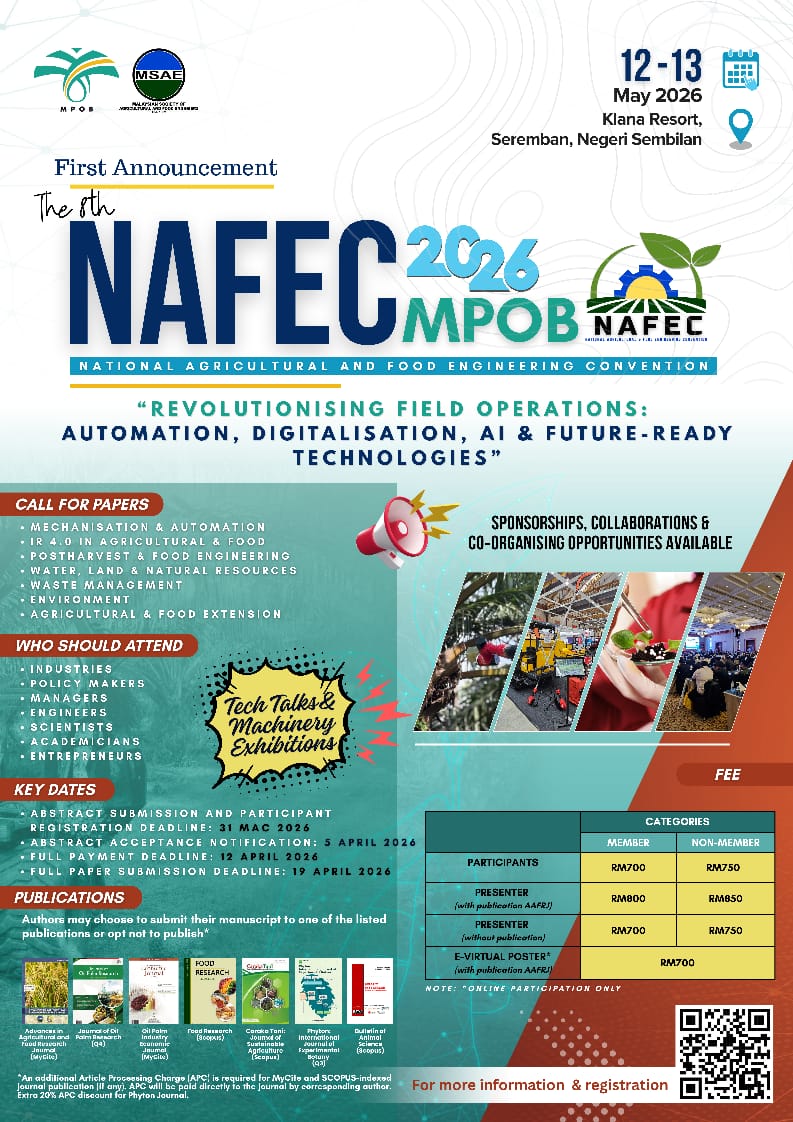Mechanical static structural analysis of CANTAS sickle blade
DOI:
https://doi.org/10.36877/aafrj.a0000095Abstract
A CANTAS is a motorized palm tree cutter which is specially developed to ease the process of harvesting oil palm fresh fruit bunch (FFB). The most crucial part of this machine is the top sickle which is vibrated by the help of a motor to facilitate the cutting process. The current sickle design is made out of AISI 5160 high carbon spring steel. This paper investigates the static structural strength of the sickle by analyzing it using a Finite Element (FEM) simulation software. The mechanical structural properties of the sickle blade material are compared with A6061-T6 aluminum alloy and AISI 316 stainless steel in the software. The result of the analysis showed that spring steel has the least structural deformation when subjected under 300 N of cutting force which is only 6.42 mm compared to 6.98 mm by stainless steel and 18.94 mm by aluminum. The total stress experienced by the sickle made of spring steel, stainless steel and aluminum are 672 MPa, 671 MPa and 668 MPa respectively. Although spring steel sickle experience the highest stress, the value does not exceed its ultimate tensile strength value which means that it will not break under such stress unlike stainless steel and aluminum. In terms of weight, aluminum sickle is the lightest which is only 70.25 g when applied to the current design compared to 199.58 g for spring steel and 202.88 g for stainless steel. However, the disadvantage of spring steel compared to the other two materials is that the spring steel is prone to corrosion due to rust. In conclusion, the current material for the sickle design which is spring steel is the best choice of material for CANTAS when compared to aluminium and stainless steel based on the analysis done using FEM simulation.
Downloads
Published
How to Cite
Issue
Section
License
Copyright (c) 2020 Ahmad Syazwan Ramli, Abd Rahim Shuib, Mohd Azwan Mohd Bakri, Mohd Ikmal Hafizi Nohd Azaman, Mohd Khairul Fadzly Md Radzi, Mohd Rizal Ahmad, Mohd Ramdhan Mohd Khalid, Salmah Jahis

This work is licensed under a Creative Commons Attribution-NonCommercial 4.0 International License.
Author(s) shall retain the copyright of their work and grant the Journal/Publisher right for the first publication with the work simultaneously licensed under:
Creative Commons Attribution-NonCommercial 4.0 International (CC BY-NC 4.0). This license allows for the copying, distribution and transmission of the work, provided the correct attribution of the original creator is stated. Adaptation and remixing are also permitted.

This broad license intends to facilitate free access to, as well as the unrestricted reuse of, original works of all types for non-commercial purposes.
The author(s) permits HH Publisher to publish this article that has not been submitted elsewhere.

.png)

.jpg)



